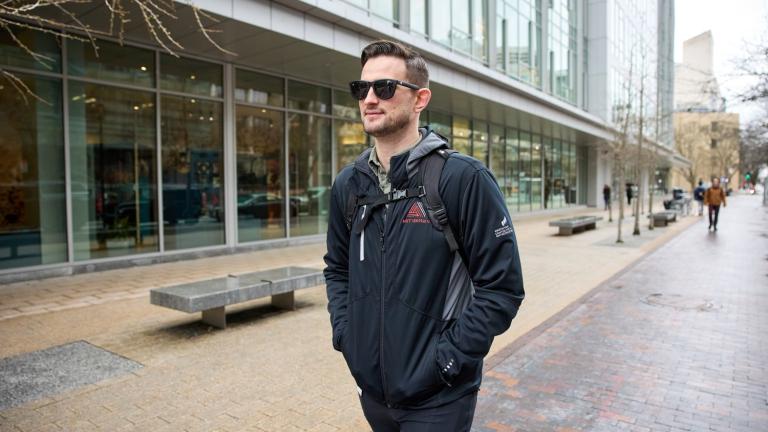
“MIT Sloan was my first and only choice,” says MIT graduate student David Brown. After receiving his BS in chemical engineering at the U.S. Military Academy at West Point, Brown spent eight years as a helicopter pilot in the U.S. Army, serving as a platoon leader and troop commander.
Now in the final year of his MBA, Brown has co-founded a climate tech company — Helix Carbon — with Ariel Furst, an MIT assistant professor in the Department of Chemical Engineering, and Evan Haas MBA ’24, SM ’24. Their goal: erase the carbon footprint of tough-to-decarbonize industries like ironmaking, polyurethanes, and olefins by generating competitively-priced, carbon-neutral fuels directly from waste carbon dioxide (CO2). It’s an ambitious project; they’re looking to scale the company large enough to have a gigaton per year impact on CO2 emissions. They have lab space off campus, and after graduation, Brown will be taking a full-time job as chief operating officer.
“What I loved about the Army was that I felt every day that the work I was doing was important or impactful in some way. I wanted that to continue, and felt the best way to have the greatest possible positive impact was to use my operational skills learned from the military to help close the gap between the lab and impact in the market.”
Check out the photo essay from MIT News, providing a snapshot of what a typical day for Brown has been like as an MIT student.






